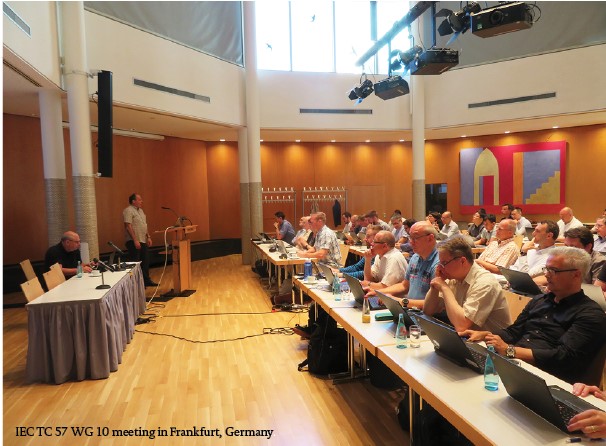
After the first edition of IEC 61850 was introduced as a communication standard for substation automation more than 15 years ago, it has been steadily growing in popularity based on the positive experience gained in its many different applications all over the world.
We have a saying that appetite comes with eating and we can say something similar related to the development of the IEC 61850 standard – that the requirements for its evolution are coming with the experience from using it. And this is what has been happening since the publication of the first edition.
Many of you know that Edition 2 of the standard was not focused anymore just on substation protection, automation and control applications and as a result the standard is now dedicated to power utility automation
We have already published Edition 2 and some amendments to it known as Edition 2.1. Members of the different working groups in IEC TC 57 are taking it in different domains in order to meet the requirements for improvements in the reliability, security and efficiency of the electric power grid.
Utilities and manufacturers are learning from the experience of its application for different functions in different environments and providing feedback to the members of working group 10 that helps us to improve the existing object models and communication services and expand their mapping to existing protocols better suitable for smart grid and Internet of Things related applications.
Many of these task forces in working groups are developing now parts of the standard that will be published as Edition 3. As the result of all that many people are asking “Is this ever going to stop? “And the answer is “It depends!” If we reach a point when we have addressed all the needs of a specific domain, we don’t have to continue developing the standard related to this domain. However, there are still a lot of gaps and we keep learning from the experience with the different standard applications.
As long as we keep discovering ways to improve it and make it capable of covering the needs of all its users, we will keep publishing not only Edition 3, but probably many new editions in the future.
This doesn’t mean that once you put a PAC system in service or expanded it for future applications you will have to go back and completely refurbish it.
This is due to the key requirement for backwards compatibility that ensures that any future version of the standard is going to work with devices that were developed and installed in the past. But the key to a successful future is to keep implementing it and learning from our experiences.








